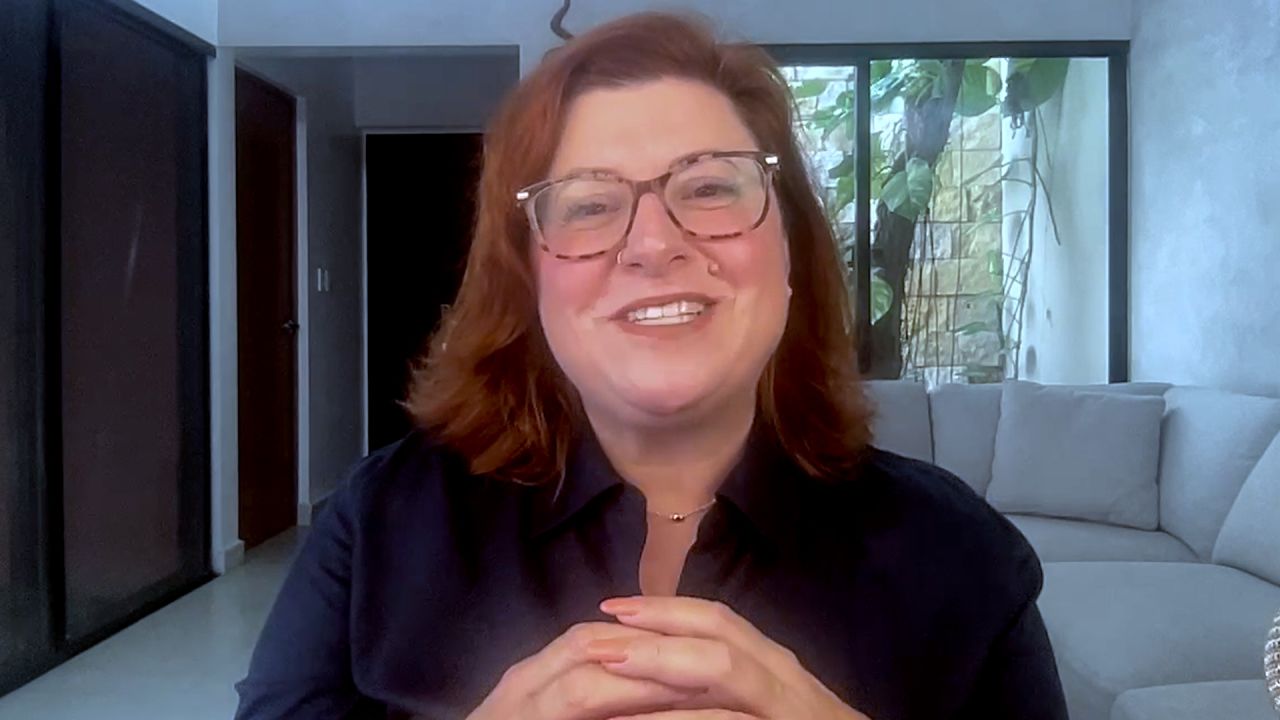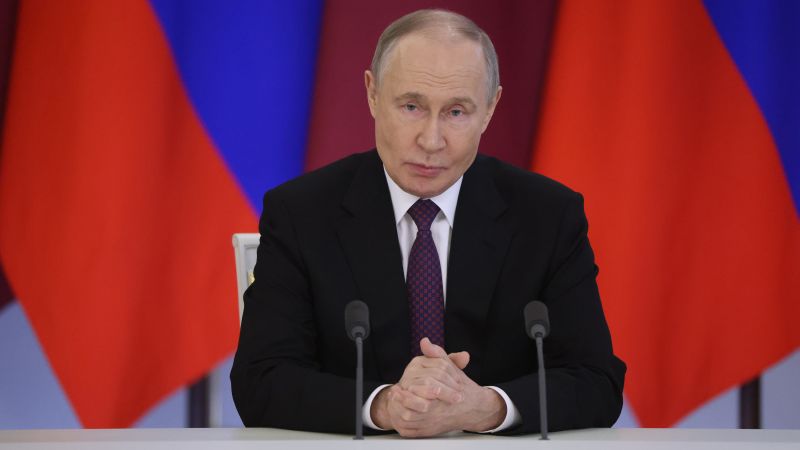Editor’s note: Sign up for Unlocking the World, CNN Travel’s weekly newsletter. Get news about destinations, plus the latest in aviation, food and drink, and where to stay.
CNN
—
Drawn by sunshine or a lower cost of living, a growing number of Americans are choosing to live their golden years outside the US, in the hope that it will better suit their financial or lifestyle needs and wants.
While official numbers aren’t available, companies and organizations that specialize in assisting people move abroad have seen a massive post-election uptick in traffic and enquiries over the last few months — anecdotal evidence, some say, suggesting a “momentum, a movement taking shape” among Americans, including many retirees, seriously considering (or already undertaking) a permanent move abroad.
“I don’t think (it’s) going to just dissipate the way it has in every previous election that I’ve been doing this,” Kathleen Peddicord, founder and publisher of Live and Invest Overseas, told CNN Travel. “I don’t think this is going to fade away. They’re asking pretty serious questions about this country versus this country, and ‘What would my residency options be, and what will my tax burdens be?’ So they’re not dreamy questions. They’re very practical.”
Established in 2008, LIOS publishes regular content related to moving abroad, such as questions about taxes and health care. In the days following the election, web traffic was about 250% higher than normal, Peddicord says, and the sustained interest has helped fuel “the greatest growth in our readership in our history.”
Retirees make up about 80% of the LIOS audience, including those who are already retired and those planning for it, Peddicord said, and its annual list of 10 Best Places to Retire is among the publication’s “most read and highly anticipated” reports.
International Living, a monthly magazine and website that focuses on living abroad, has also seen a significant uptick in enquiries and traffic, which started even before the election, Executive Editor Jennifer Stevens tells CNN Travel. Its data-driven Annual Global Retirement Index is based on factors including housing, visas, cost of living and health care, as well as input from more than 200 on-the-ground editors and correspondents.
At the publication’s most recent annual conference, which was held in Las Vegas in October 2024, Stevens said she spoke to many readers, including retirees, about their growing concern over “Trump policies making living sort of uncomfortable in the US,” as well as the “social situation in the States” and the “economic implications of tariffs” under the new administration.
At the same time, Stevens said she also noticed a sense of excitement in others over the prospect of potential tax breaks and more expendable income — which could stretch even further outside of the US. “They’re looking for ways they can diversify internationally or spend some of that money abroad,” she says.
Money — or lack of it — continues to be a pressing issue for many retirees in the US. Skyrocketing costs for housing, rent and healthcare are siphoning away savings more quickly than in previous generations — in fact, almost half of US families have no retirement account savings.
Meanwhile, more than 17 million Americans aged 65 or older — approximately one in three — are considered economically insecure (meaning they have income levels at 200% or more below the federal poverty level).
Moving to a country with a much lower cost of living offers an opportunity to “invert your budget, so you could take what you’re currently spending on, say, transportation, and move to a place where you don’t need a car, for instance, and use that budget for discretionary spending,” Sophia Titley, LIOS editor-in-chief, tells CNN Travel.
In addition to their finances, which often are based on fixed budgets, retirees face a specific set of criteria to consider before making the leap abroad. First of all, there’s the issue of whether they are legally allowed — or have the means — to retire in their destination of choice. (For example, some countries may offer attractive employment options for digital nomads — but not so much for those who are no longer working.)
“You need to look at places where you can reasonably get a residency visa,” Titley says. “I would say that’s the best place to start. Look at what you have, what you can afford, the different thresholds to qualify, and look at places that actually offer residency permits for everyday people.”
How to exit the country and not screw it up
How to exit the country and not screw it up
02:00
Another key consideration: determining your eligibility and costs for health care and health insurance in a new destination. Experts recommend researching options thoroughly beforehand, as some countries, including Spain and France, require health insurance as a requirement for granting a visa.
However, Peddicord notes that “the good news … is that wherever you go, the health care is going to be more affordable, because it’s more expensive in the United States than anywhere — not only health care, but also health insurance.”
Finally, retirees who receive Medicare — the federal insurance program available to Americans aged 65 and older (and some younger individuals with disabilities) — should make sure to do their homework about what moving abroad means for their eligibility.
Except for a few situations, Medicare will not cover health care costs outside of the US; however, experts recommend keeping coverage if possible, which can offer a safety net and sense of reassurance in the event of a serious illness or injury.
“It just keeps your options open,” Peddicord explains. “You can choose to go back to the States, where you may have family and more of a network of support for going through an experience like that, whereas, if you’ve given up your Medicare, it’s not a straightforward thing always to re-engage in the program.”
While visas, taxes and healthcare are among the most important considerations for a move abroad, retirees also should consider destinations — and the smaller regions within those — that align with their preferred lifestyle.
Here are five countries that are well-suited for retirees in 2025. (This list primarily targets retirees from the US, but it also contains helpful general information.)
This Central American country topped International Living’s Annual Global Retirement Index as the world’s best retirement destination for 2025, fueled by its straightforward visa process, excellent quality of life and good value for money.
Panama boasts “what is arguably the best retiree visa in the world,” Stevens explains. “They figured out, before almost anybody else, that if you made it easy for foreign retirees to come, they would happily come and spend their money in Panama. So Panama makes it very easy to get a visa and to renew that visa, and it gives you great benefits as a retiree.”
Those benefits include discounts on airfare, the theater and more. Panama’s modern health care system also earns high marks — and in addition to lower costs for medical services, legal residents who are pensioner age (60 years for men, 55 for women) receive 20% off prescription medications.
Key considerations: Panama has a fairly low threshold for its passive income requirement: a minimum monthly income of US $1,000 from a government program, such as Social Security, or a private corporation. That minimum goes up by $250 per month per dependent.
English proficiency levels are fairly low across the country, so it’s extremely helpful to have at least some grasp of Spanish.
How to make the move: The Embassy of Panama’s website clearly states in English on its website what’s needed to apply for a retiree visa, also known as the Pensionado Visa. Note that your application must be processed by a Panamanian attorney, and you’ll need to apply in Panama.
France is famous for its fine dining, world-class museums and beautiful beaches and countryside. But francophiles who dream of spending their retirement years in this beloved European country can also take advantage of a more practical benefit: its top-notch health care system. Services are provided to all residents and largely subsidized by the government.
In addition, France’s affordability also comes as a surprise to some. According to Chase Buchanan’s latest data, rent for a family apartment in France can be as low as about $1,100 in cities other than Paris, and groceries, public transportation and other expenses are also significantly lower than in the US.
“Outside Paris, there are parts of France that are very, very affordable, competitively affordable,” says Peddicord. With her family, she splits time between Paris and Panama City and says many people are surprised to learn that Paris is the cheaper of the two.
She advises anyone with a dream of living their golden years in the City of Light to not immediately write it off as unaffordable. “If you’re focused on Paris, for example, even that you shouldn’t take off your list without really doing some research.”
Key considerations: One of the biggest advantages for France-bound American retirees is the ability to continue contributing to tax-advantaged US retirement accounts like 401(k)s and IRAs. Thanks to the US-France tax treaty, these accounts will continue to be taxed at US rates for Americans living in France, instead of potentially higher French income tax rates.
However, one caveat about inheritance tax: Unlike the US, in France the tax applies per beneficiary instead of the total estate value. In addition, forced heirship rules require set amounts for legal heirs — something retirees with sizable estates should take into consideration.
France’s bureaucracy can be intimidating, especially for those who don’t speak French. English isn’t as widely spoken as in some other European countries, especially outside of major cities.
How to make the move: Ready to say oui to retiring in France? US citizens can apply for
the Long-Stay Visa for Retirement (Visa de Long Séjour pour Retraité). This option will require proof of sufficient financial resources, as well as health insurance. You’ll apply for this visa at the nearest French consulate in the US, after which you obtain what’s known as the carte de séjour visiteur (a residence visa). Your pension must be at least $1,073 as a single or $1,666 as a couple. The visa is only valid for one year, but it can be renewed.
Malaysia, which ranked seventh on International Living’s 2025 Global Retirement Index, offers “truly extraordinary” bang for your buck, Stevens says. It’s well suited for those looking to stretch their budgets, as well as retirees craving a comfortable lifestyle for “so much less than it would cost you in the States,” she explains. “And if you want to live simply, you can do it for next to nothing.”
According to data from International Living, rent for a one-bedroom apartment in Kuala Lumpur usually runs between $300 and $500, with monthly utilities costing around $40-60. Outside the capital, second-tier cities such as Penang and Malacca also offer superb value and slightly lower rent costs, along with a slower pace of life and robust expat communities.
Malaysia’s health care system also ranks highly, with modern facilities, English-speaking staff and affordable and excellent quality of care. Another bonus for retirees: Money you bring into the country is tax-exempt.
In addition, the southeast Asian country is a veritable melting pot of cultures and cuisines, and English is widely spoken (official signage also is written in English). “In some ways, it’s easier to navigate that part of the world than it is, say, Mexico, if you don’t speak Spanish,” Stevens says.
Key considerations: Malaysia has a humid, tropical climate year-round, which may not be the best fit for those who prefer a change of season. In addition, for retirees who envision frequent trips back to the US, traveling from Malaysia is a beast, with flights alone at more than 20 hours.
How to make the move: Malaysia provides several visa options that are specifically aimed toward retirees. The most popular is the Malaysia My Second Home (MM2H) program, which offers a renewable multiple-entry visa. To qualify, you must be over 50 years old, as well as meet some financial requirements: deposit approximately $35,883 into a bank in Malaysia; (global institutions including Citibank and HSBC also qualify), or prove you have a monthly income of approximately $2,350 from a government pension.
With excellent weather, high-quality health care, a relatively low cost of living and world-famous gastronomy, this European country has been a perennially popular spot among the retiree set for decades. In InterNations’ 2024 Expat City Ranking, Spanish cities captured the top three spots (Valencia, Malaga and Alicante) out of 53 cities; Madrid, meanwhile, ranked seventh and Barcelona, 21st.
In addition, Spain boasts a wide variety of options for different lifestyles, from the cosmopolitan hub of Madrid to small villages up and down the country’s Mediterranean coastline, as well as the northern Basque region along Spain’s Atlantic coast.
What to consider: Spain’s tax system can be complicated, and it differs from one autonomous region to another. The general rule of thumb is that if you spend more than 183 days per calendar year in Spain, you’re considered a tax resident.
English proficiency is among the lowest in Europe, especially outside major cities like Madrid and Barcelona. Castilian Spanish is spoken by the majority of Spaniards, but some autonomous regions have their own official language (Catalan in Catalonia, for example, and Basque, or Euskara, in the Basque Country).
Finally, don’t expect any early-bird dinner specials: Spaniards rarely eat their evening meal before 8:30 p.m.
How to make the move: Spain’s non-lucrative visa (or NLV, also known as a retirement visa), is a popular route for Americans. It’s aimed primarily at those with sufficient passive income or financial means to not be a burden on Spain’s welfare system (currently, the minimum is about $2,600 per month for a single applicant; additional family members require more funds per member).
You’ll apply through your nearest consulate (note: this links to the Los Angeles consulate but outlines the process step-by-step). You’ll also need to show proof of insurance in Spain, which can be a tricky step to navigate (travel insurance is not accepted, by the way). Be prepared for plenty of paperwork and for appointments to be booked far in advance, so plan accordingly.
The US’s southern neighbor consistently ranks high as a top retiree destination (it was fourth in International Living’s Global Retirement Index for 2025). Its proximity to the US, affordability, and slower pace of life are strong draws. Mexico also offers an excellent option for retirees who want to live abroad only part-time.
Meanwhile, thriving English-speaking expat communities in most cities, as well as many of the same service providers popular in the US, including Netflix and Amazon, help ease the transition for newcomers.
Mexico also offers several tax advantages that are especially beneficial to retirees. It doesn’t have inheritance or wealth tax, and unlike many other countries, tax residency is determined not by the total number of days spent in the country, but whether your primary home or center of business is established there.
Key considerations: Mexico ranks among the least peaceful countries in Latin America. According to government statistics, there were 31,062 homicides in 2023, about 24 per 100,000 residents (in the US, that figure was about six per 100,000 people in 2023, according to Federal Bureau of Investigation data).
Cartel-related violence and drug trafficking in Mexico may capture the majority of media attention, but pettier crimes such as theft and pickpocketing are the most reported problems.
In addition, as is the case in some other countries including Portugal, an influx of foreigners and increasing gentrification in certain cities has sparked growing tensions in some areas with large expat populations.
How to make the move: Valid passport holders from countries that don’t require a visa (including the United States) can remain in Mexico for up to 180 days. (They still must complete a visitor’s permit, or Forma Migratoria Multiple (FMM), at their port of entry. Keep in mind that the exact number of days allowed remains at the discretion of the immigration official processing entry.)
For longer stays, retirees can look into visas as temporary and permanent residents. Both are fairly straightforward, but applicants must be able to demonstrate financial stability.
Source link



























